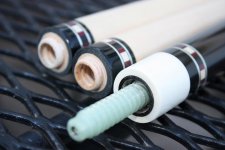...especially a wooden one? Those collars seem fragile to me, but you see them on enough builders to know serves a higher philosophy.
And "better feel" seems too subjective of an answer. To lathe something so particular must have a purpose. Brass collars too, why not?
Attaching a picture, but no maker, for honest opinions.
Thanks!

edit: for bad spelling.
And "better feel" seems too subjective of an answer. To lathe something so particular must have a purpose. Brass collars too, why not?
Attaching a picture, but no maker, for honest opinions.
Thanks!

edit: for bad spelling.
Last edited: